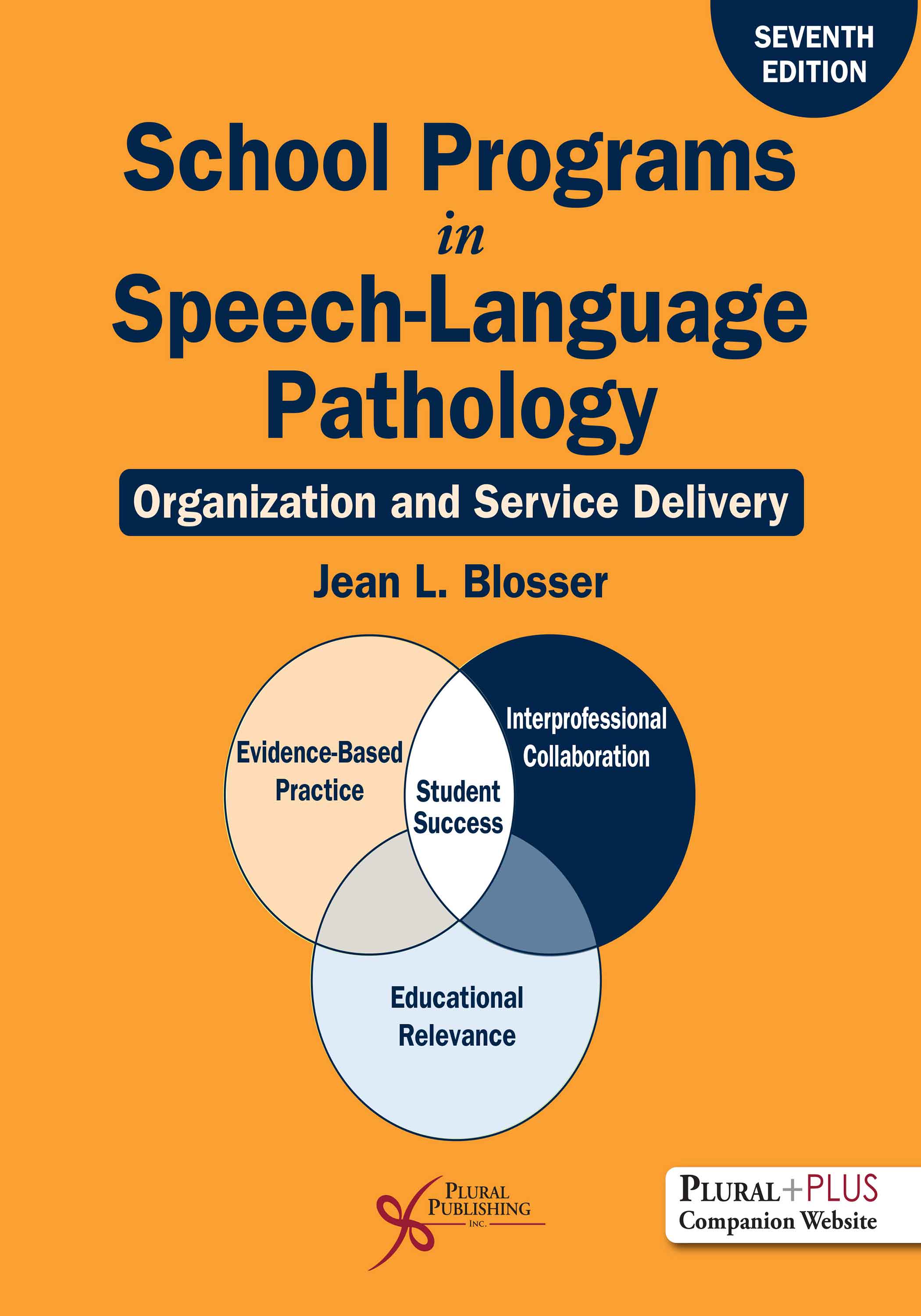
School Programs in Speech-Language Pathology: Organization and Service Delivery
Seventh Edition
Jean Blosser
Details: 457 pages, B&W, Softcover, 8.5 " x 11"
ISBN13: 978-1-63550-611-2
© 2025 | Available
For Instructors
Purchase
The seventh edition of School Programs in Speech-Language Pathology: Organization and Service Delivery is an insightful, innovative, and practical resource for university faculty and students, experienced speech-language pathologists (SLPs), program leaders, school administrators, and education partners.
The organization and content of the book are structured to stimulate creative thinking about how to improve the quality and effectiveness of speech-language services in schools so students with communication disorders reach their highest potential. Challenges due to the complex and ever-changing education landscape are thoughtfully explored. A fresh perspective on establishing service delivery practices and processes is offered. The concept of service delivery is broadened by aligning classroom instruction and intervention goals and preparing educators and families to support student success. School Programs encourages SLPs to embrace their roles and responsibilities and describes their participation in the MTSS process utilizing an innovative six-stage collaborative approach that results in evidence-based, effective, coordinated, and efficient services. Guidelines are recommended for SLPs to actively participate on school teams to gain and exchange pertinent knowledge; identify school demands and expectations; and collaborate with fellow education partners to ensure that instruction, intervention, and services are educationally relevant and coordinated.
Key Features
- Authentic examples and strategies to reinforce the key concepts
- Service delivery approaches versus specific assessment and treatment methods for specific disorders as is often presented in other books
- Chapter Learning Objectives at the beginning of each chapter establish the theme and goals for the chapter
- Chapter summary questions and projects reinforce concepts and facilitate practical application
New to This Edition
- Notable advances in the evolution of school speech-language pathology service delivery
- Six-stage framework for effective collaboration with education partners
- Strategies to ensure educationally relevant intervention and services that contribute to students’ success in home, school, work, and community
- Additional practical resources such as replicable worksheets and forms to promote meaningful interactions with educators and parents to improve the quality of referrals, intervention, and progress monitoring
- Positive examples of advocacy in action
- Thought-provoking questions and projects to stimulate personal and professional reflection
PluralPlus Online Ancillaries
For instructors: PowerPoint Slides, Test Bank, Activities/Exercises
For students: Forms/Documents
List of Tables
List of Figures
Preface
Acknowledgements
Chapter 1. Evolution of Speech-Language Pathology Services in Schools
Tracing Our Roots
The Michigan Story
Early Development
Expanding Our Scope of Practice
The “Quiet Revolution”
Federal Legislation Fosters Change
The PARC Case
Mainstreaming
United States Department of Education
Education Reform and Federal Legislation
What’s in a Name?
Evolution of Speech-Language Pathology Services
Today’s SLPs Wear Multiple Hats
Revolutionary Responses to Complex Challenges
Chapter 2. Career Path to Becoming an SLP
Code of Ethics
Ethics Issues in Schools
Personal and Professional Qualifications
Professional Credentials
Nurturing Professional Relationships
Chapter 3. Foundations of School Speech-Language Pathology Programs
Our American Educational System
School Organizational Structure
Public Laws Guiding Speech-Language Service Delivery
Accountability
Inclusive Education
Parents Make Great Partners
Trends in School Reform Through the Years
Continuous Improvement: Priorities and Goals from 2000-2026
Setting Educational Standards
Numbers Count! Prevalence and Incidence
SLPs’ Caseload Composition
Public School Funding
Chapter 4. SLPs Lead and Manage
Leaders Cultivate Change
Impressive Initiatives
Basic Program Management Principles
School SLPs’ Roles and Responsibilities
The Many Faces of Management
Manage Program Development and Change
Develop Program Goals and Objectives
Manage Work Responsibilities and Time
Professional Development Plans
Quality Improvement
Chapter 5. Tools of the Trade
Designated Space for Speech-Language Pathology Programs
Special Consideration for Special Populations
Encourage Observations
Tools: Technology, Equipment, Materials, and Supplies
Integrate Advanced Technology
Employ Technology For Intervention and Service Delivery
Augmentative and Alternative Communication Systems (AAC)
Introduce Intelligent Personal Assistants (IPA)
Virtual Service Delivery
Select Intervention Materials Based on Goals
Integrate Multimedia Materials
Surf the Web
Assistive Listening Devices
Determine Product Quality and Applicability
Organize Materials and Intervention Activities
Maintain Inventory Records
Budget Wisely
Chapter 6. Outcomes, Accountability, Compliance
Outcomes and Impact in School Services
School Speech-Language Services Outcomes Framework
I. STUDENT Outcomes
Report Progress
II. PARTNERSHIP Outcomes
III. PROGRAM and System Outcomes
Compliance Is Required
Meeting HIPAA And FERPA Requirements
Reflect On Your Program And Services
Risk Management Plan
Chapter 7. Establishing the Caseload
The SLP’s Workload and Caseload
SLPs’ Work Responsibilities
Establish a Common Foundation
Prereferral Process
Identify Students With Disabilities
Referrals for Speech-Language Evaluation
Screening Services
Assessment
Multifactored, Multidisciplinary Evaluation
SLP’s Responsibility in a Multifactored Assessment
Scan and Analyze the Environment and People in the Environment
Eligibility For Speech-Language Services
Classification Of Procedures and Communication Disorders
Caseload Composition and Size
Rating Functional Communication
Clinical Judgment
Match the Right Student With the Right Services and Interventions
Service Completion: When Students Exit Therapy
Who Determines Eligibility Or Dismissal?
Placement Team’s Role
Ethical Responsibility
Chapter 8. Match Students With the Right Services
What’s So Special About Special Education Services?
Continuum of Services for Students With Disabilities
Inclusion Is Important
Speech-Language Pathology Services Within the Continuum
Service Delivery Characteristics
Key Service Delivery Variables
Range of Service Delivery Approaches
Match Service Delivery to Individual Student’s Needs
Determine Dosage: Amount, Frequency, Intensity, and Duration of Intervention Services
PAC Framework for Determining Services
Multi-Tiered System Of Support (MTSS)
Response to Intervention (RtI): Prevention and Prereferral
Coordinate Services
Specialized Services
Virtual Delivery
Scheduling Configurations
Coordinate To Plan Schedules
Chapter 9. Educationally Relevant Services
Educational Relevance—What an Important Concept!
Plan Individualized Education Programs (IEP)
A Framework for Planning
Develop An Individualized Education Program
The IEP Team
Individualized Education Programs (IEP)
IEP Purpose, Content, and Format
Individualized Family Service Plan (IFSP)
Individualized Family Service Plan (IFSP)
Individualized Transition Plan (ITP)—After Age 14
Identify the Appropriate Assessment and Treatment Approach
Align Intervention With Curriculum Standards
Modify the Instructional Environment
Make Speech-Language Intervention Relevant to the Student’s Educational Needs
Implement a Logic Model
Focus on Impact
Universal Design for Learnings
Plan and Evaluate Sessions
Motivate Students
Confirm Effectiveness
Address the Needs of Special Populations
Literacy (Reading and Written Language Disorders)
Cultural and Linguistically Diverse Populations
Neurodiverse Learners
Attention Deficit and Central Auditory Processing Disorders
Autism Spectrum Disorders (ASD)
Behavior Problems and Disorders
Childhood Trauma, Anxiety, and Chronic Stress
Complex Communication Disabilities
Traumatic Brain Injury (TBI)
Hearing Impairments
Working With Adolescents
Treating Students in Groups
Counseling
Preventing Communication Problems
Effective Team Engagement
Chapter 10. Outcomes and Impact Matter: Create Strong Partnerships
Benefits of Collaborating and Consulting
Interprofessional Education, Practice, and Collaboration (IPE, IPP, IPC)
Five Challenges to Successful Collaboration
School Culture and Collaboration
Knowledge and Attitudes
Foster Effective Engagement
Specialized Instructional Support Personnel (SISP)
School Principals
Teachers
Special Education Teachers
Educational Audiologists
Speech-Language Pathology Assistants (SLPAs) Or Paraprofessionals
School Psychologists
Occupational Therapists (OT)
Physical Therapists (PT)
Board Certified Behavior Analysts (BCBA)
Social Workers
Bilingual Educators and English as a Second Language (ESL) Teachers
Guidance Counselors
School Nurses
Health And Physical Education Teachers
Vocational Counselors and Employers
School Support Staff
Community Medical Professionals
Dentists
Engage the Family
Connect With Parent Groups
Involve Siblings
Consider Family Situations
Involve Students in Therapy Decisions
Monitor for Student Satisfaction
Maintain Ongoing Communication With Collaborative Partners
Community Information Program
Discussion Questions and Projects
Chapter 11. Experience Life as a School SLP
University Externship Programs
Goals for the School Extern Experience
The School Externship Team
Laying Groundwork to Achieve Success
Take Charge! Make The Most of Your Experience
Competency-Based Evaluation
ASHA Certification and State Licensure Requirements
A Word of Advice
Chapter 12. Launch Your Career Journey
Access Support and Resources
Expand Your Expertise
Identify Evidence-Based Intervention and Services
Advocate To Influence Decision-Makers
Be a Grassroots Advocate
Professional Liability Insurance
School Unions
Find Your Dream Job: Where to Begin?
Be Systematic in Your Search
Obtain Required Clearances and Immunizations
Maximize Your Clinical Fellowship Experience
Consider Alternative Career Paths
Maintain A Work-Life Balance
Best Of Luck!
Appendix A. University Outreach Committee Professional Resource Document
Appendix B. Sample Individualized Education Program (IEP) Form
Appendix C. Sample of Common Core State Standards
References and Recommended Readings
Index
School Programs in Speech-Language Pathology: Organization and Service Delivery, Seventh Edition comes with access to supplementary student and instructor resources on a PluralPlus companion website.
The companion website is located at: https://www.pluralpublishing.com/publication/spslp7e
STUDENTS:
The student resources include printable worksheets and forms.
To access the student resources, you must register on the companion website and log in using the access code located in the front of your textbook.
INSTRUCTORS:
The instructor resources include PowerPoint slides, a test bank, and instructional projects. You will also have access to all of the student resources listed above.
To access the instructor resources, you must contact Plural Publishing, Inc. to be verified as an instructor and receive your access code.
Email: instructormaterials@pluralpublishing.com
Tel: 866-758-7251 (toll free) or 858-492-1555
*Note for students: If you have purchased this textbook used or have rented it, your access code will not work if it was already redeemed by the original buyer of the book. Plural Publishing does not offer replacement access codes for used or rented textbooks.
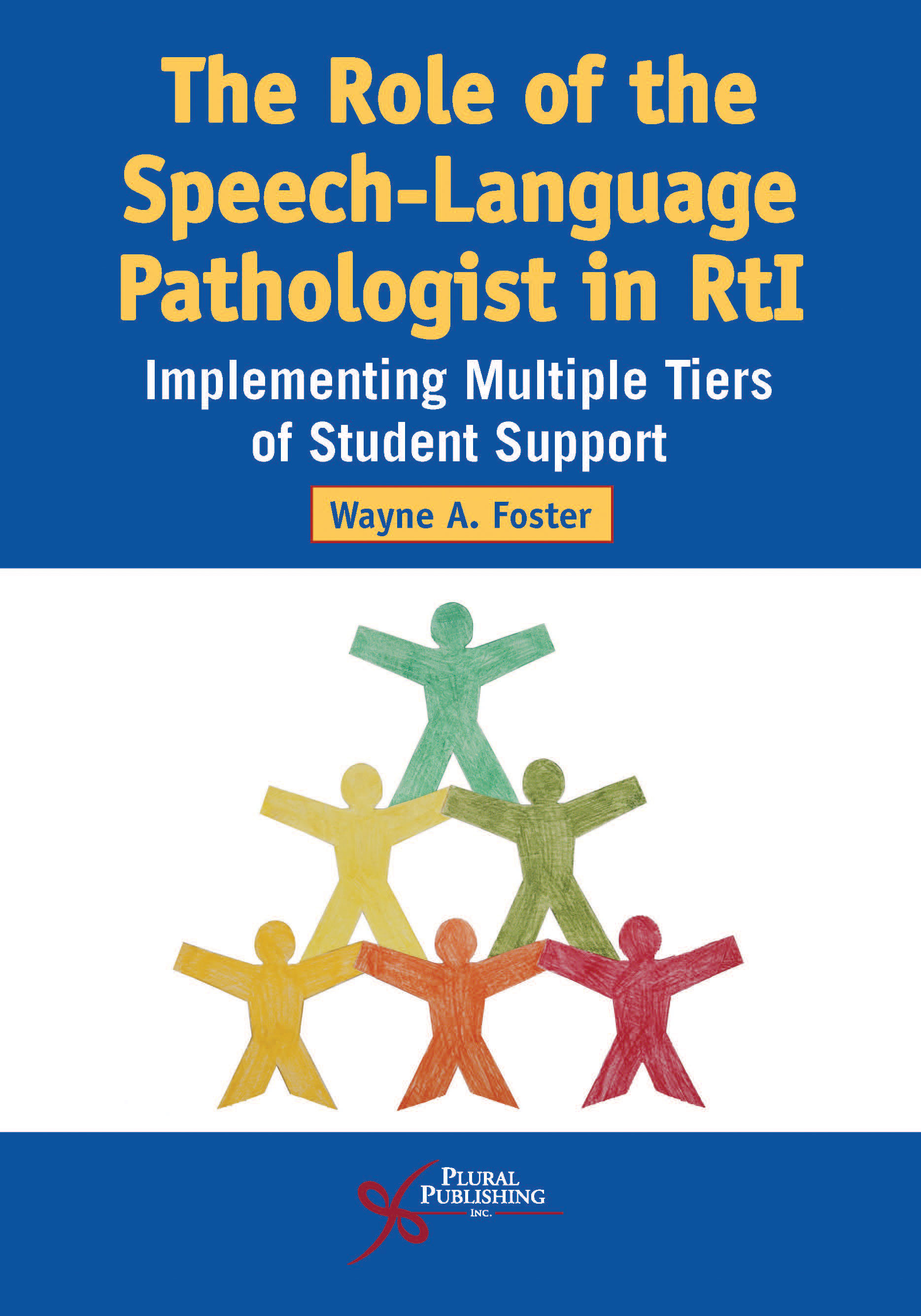
The Role of the Speech-Language Pathologist in RtI: Implementing Multiple Tiers of Student Support
First Edition
Wayne A. Foster
Details: 226 pages, B&W, Softcover, 7" x 10"
ISBN13: 978-1-63550-021-9
© 2018 | Available
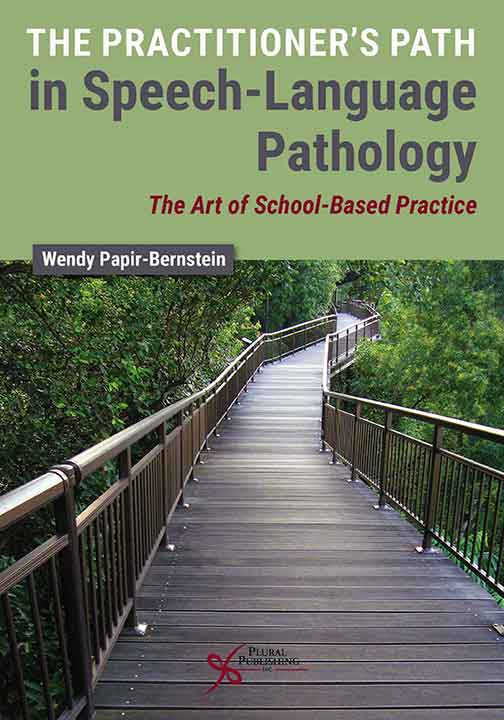
The Practitioner's Path in Speech-Language Pathology: The Art of School-Based Practice
First Edition
Wendy Papir-Bernstein
Details: 402 pages, B&W, Softcover, 7" x 10"
ISBN13: 978-1-94488-345-4
© 2018 | Available
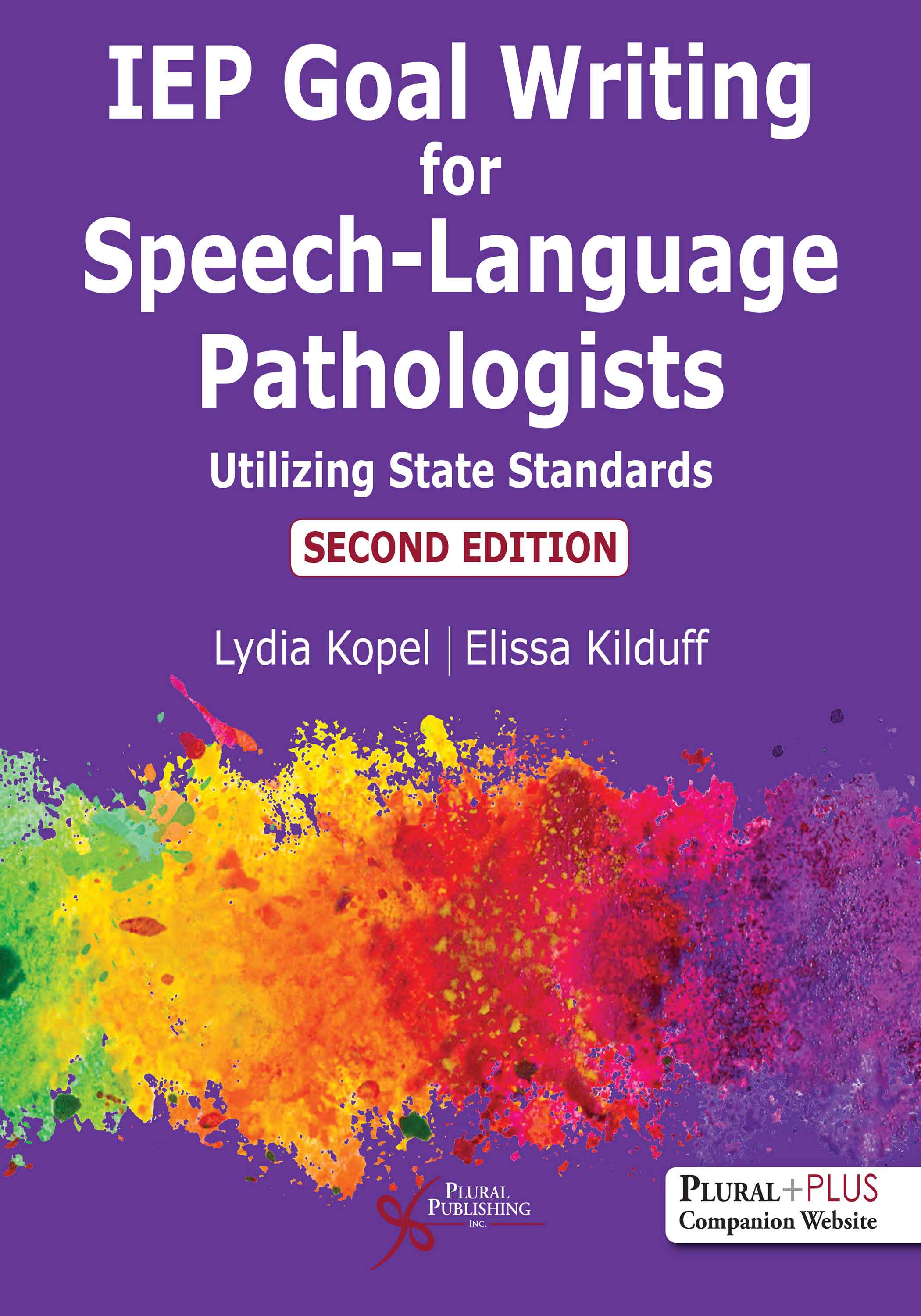
IEP Goal Writing for Speech-Language Pathologists: Utilizing State Standards
Second Edition
Lydia Kopel, Elissa Kilduff
Details: 243 pages, B&W, Softcover with layflat binding, 8.5" x 11"
ISBN13: 978-1-63550-202-2
© 2021 | Available
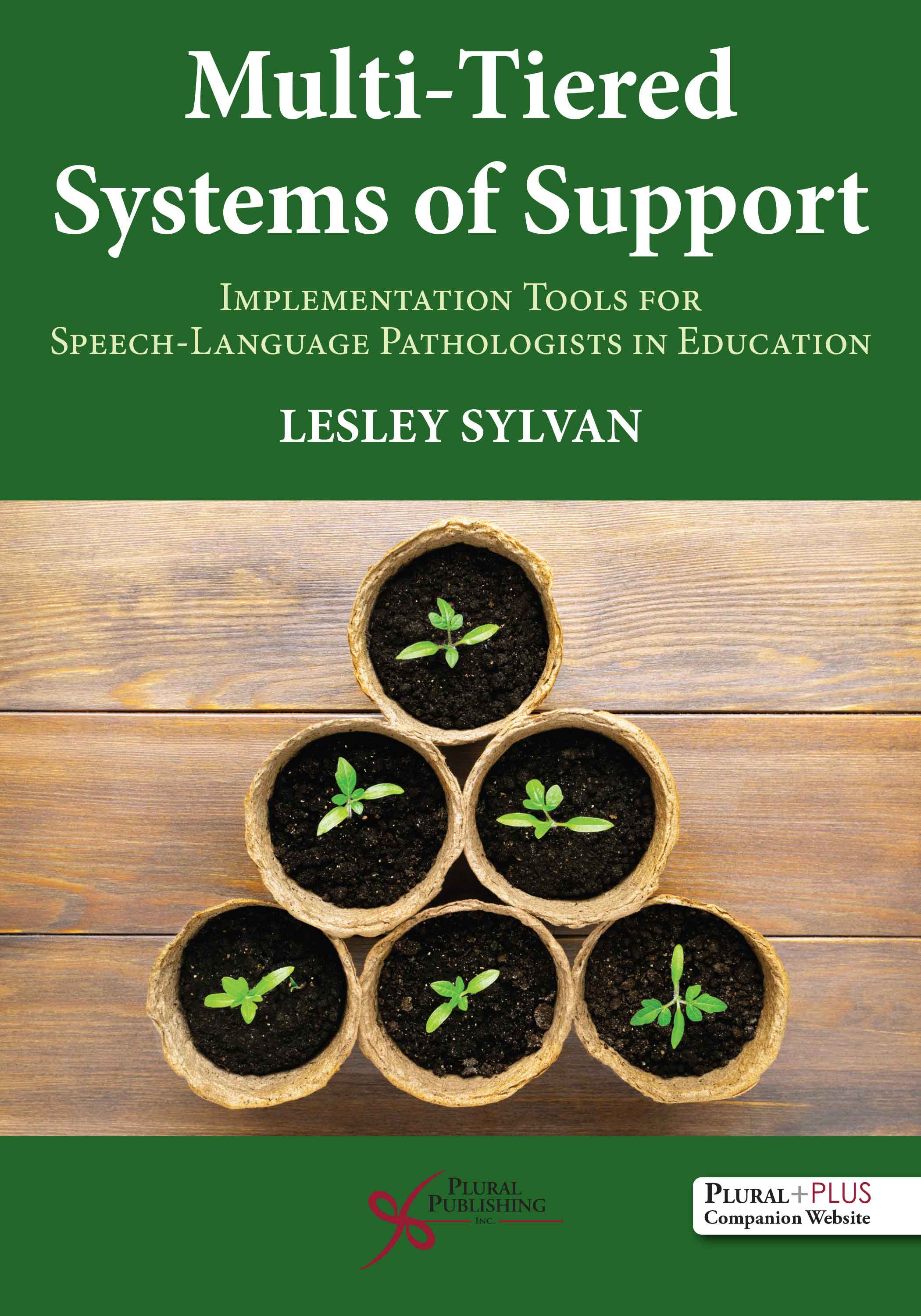
Multi-Tiered Systems of Support: Implementation Tools for Speech-Language Pathologists in Education
First Edition
Lesley Sylvan
Details: 247 pages, B&W, Softcover, 7" x 10"
ISBN13: 978-1-63550-294-7
© 2021 | Available
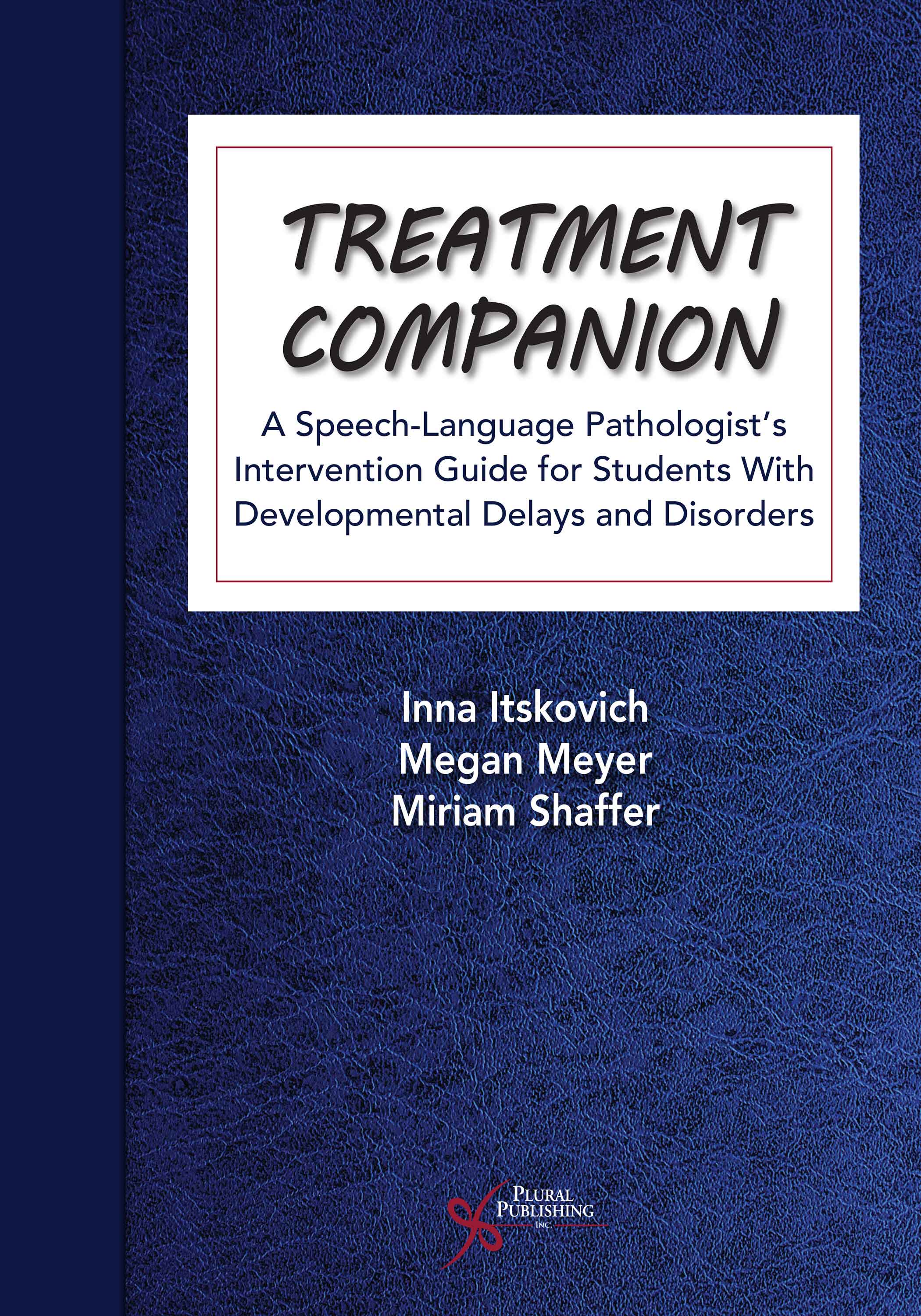
Treatment Companion: A Speech-Language Pathologist's Intervention Guide for Students With Developmental Delays and Disorders
First Edition
Inna Itskovich, Megan Meyer, Miriam Shaffer
Details: 274 pages, B&W, Softcover, 8.5 " x 11"
ISBN13: 978-1-63550-481-1
© 2023 | Available
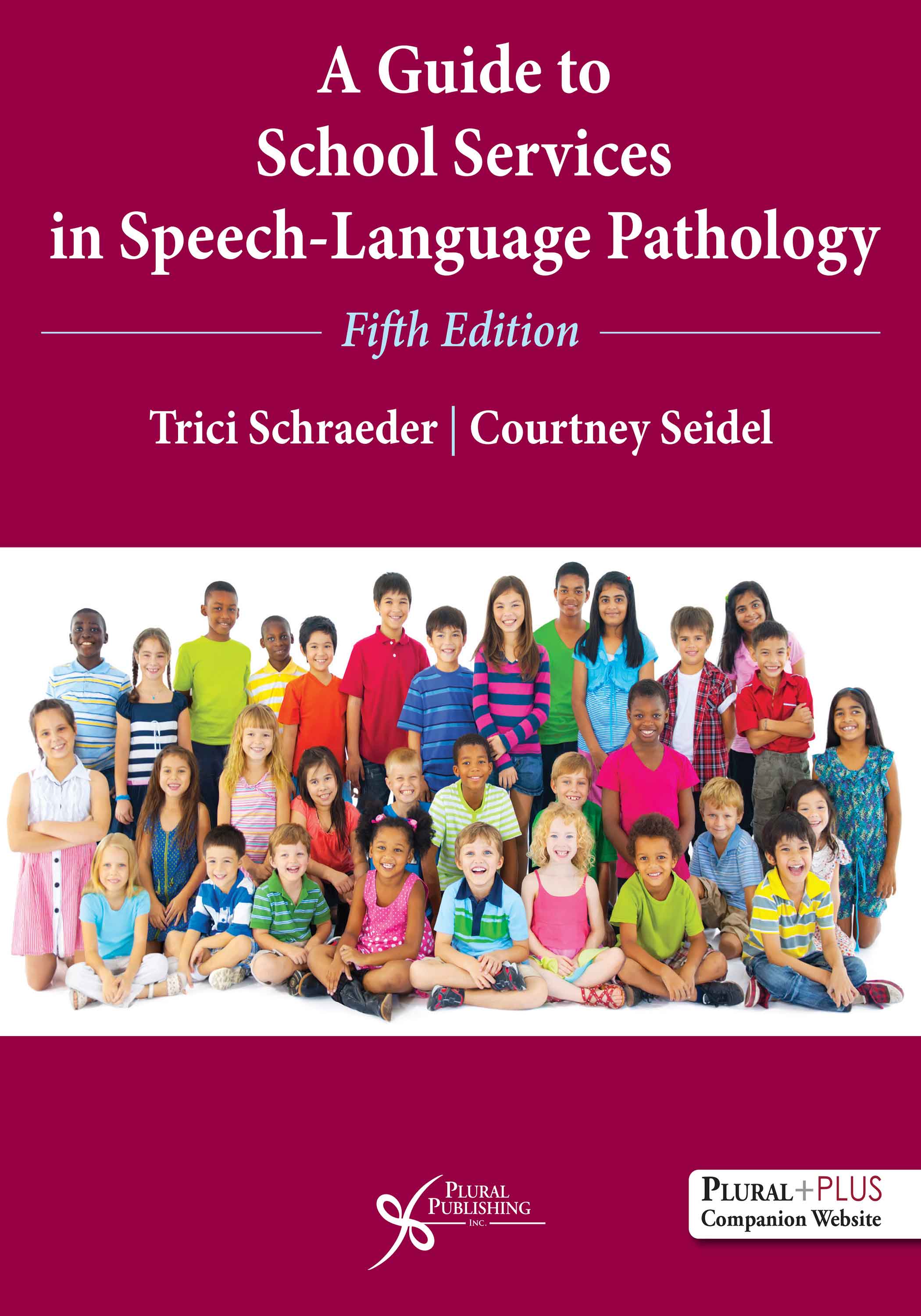
A Guide to School Services in Speech-Language Pathology
Fifth Edition
Trici Schraeder, Courtney Seidel
Details: 313 pages, B&W, Softcover, 8.5" x 11"
ISBN13: 978-1-63550-670-9
© 2026 | Available
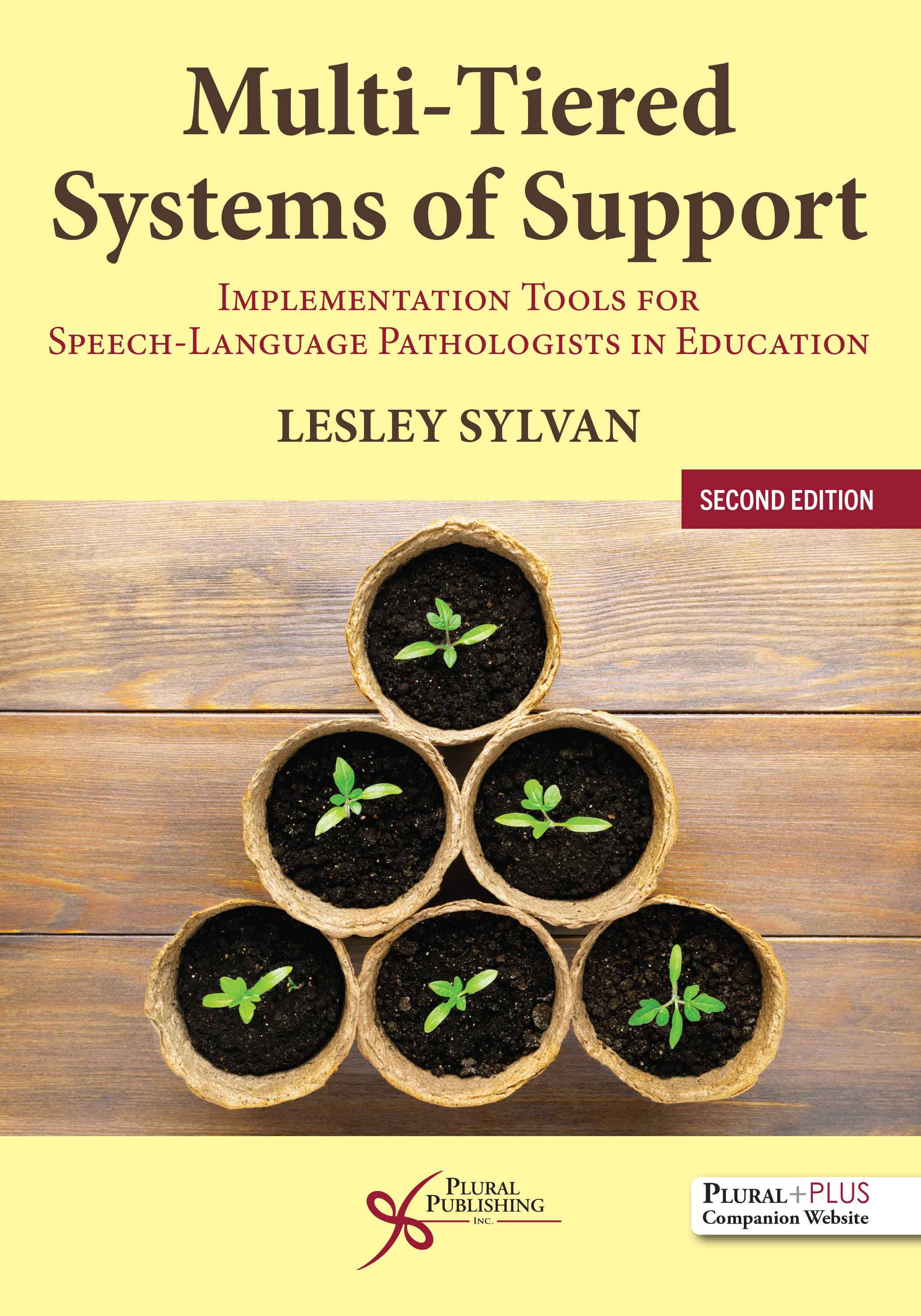
Multi-Tiered Systems of Support: Implementation Tools for Speech-Language Pathologists in Education, Second Edition
Second Edition
Lesley Sylvan
Details: 315 pages, B&W, Softcover, 7" x 10"
ISBN13: 978-1-63550-780-5
© 2026 | Coming Soon
Release Date: 06/01/2026

